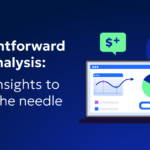
3 Ways to Hibernate Cloud Costs During this Crypto Winter

Senior Content Manager
If this looming recession is teaching us anything, it’s that the cryptocurrency market is not the hedge that we believed it to be.
The Federal Reserve Bank of America raised interest rates to levels that have not been seen in nearly 30 years (since 1994) causing inflation to rise 9.1% in June alone. How did the crypto market fare? Prices dropped to their lowest levels this year, at one point, losing $600 billion in just a week.
As it turns out, in times of uncertainty the perceived volatility of the crypto market trumps any perceived value of its decentralization. Many investors are pulling their funds out of their crypto accounts and placing their money, as always, in more stable markets such as U.S. treasury bonds or gold.
So what does this mean for Cryptocurrency businesses’ cloud costs, trying to reduce their overhead during this economic uncertainty? The withdrawal of crypto funds has resulted in low market activity. Investors are trading far less frequently than what they were. For cryptocurrency exchangers that base their revenue off a percentage fee for every transaction, this low market activity not only means less profit but a lot of wasted spend as pre-paid cloud compute infrastructure and resources go unused.
While the option to roll it all back and hibernate cloud infrastructure throughout this crypto winter seems like the obvious solution, it’s not so easy. You need to forecast how long this winter will last, and how bad it might get. But with inflation increasing at higher rates than what they’ve been throughout the life of the cryptocurrency market, the unprecedented situation makes this a difficult calculation to make.
There’s no denying that the circumstances behind the crypto crisis are difficult. But there are some ways businesses can try and overcome these challenges.
Trouble in Crypto Paradise
Prior to the current economic downturn, the cryptocurrency market’s relatively stable upswing in investment activity meant fairly predictable cloud compute usage. For those hosting their infrastructure on AWS, this relative stability made crypto exchangers perfectly suited to leverage savings brought by AWS Discount Programs. This is where a business committed to using a particular type of compute in a particular region for one or three years, in return got a significant discount.
However, the recent volatility forces cryptocurrency exchanges to reassess their allocation of resources, including a review of their AWS discount programs strategy to cover the cost of running their platform’s compute.
Go Free-Fall On-demand
Perhaps the easiest way to ride out the uncertainty is to use On-demand Instances. With this default payment option you’re charged the full retail price of an instance. While you only pay for what you use, you’re also paying a premium for it. The flexibility that you receive from leveraging On-demand will enable you to scale freely during these uncertain times. Taking into consideration that fewer instances are required, you’ll be paying a premium, but only for a small workload.
Make the Most of Discount-Based Programs
Another solution is to leverage discount programs such as Reserved Instances (RIs) and Savings Plans (SPs) which can offer as much as 72% off On-demand instances, but as we mentioned earlier, they entail long-term commitments. To build in some flexibility you can manually sell unused RIs on the AWS RI Marketplace, however they’re typically sold at a much lower price than what they were initially bought for. Savings Plans offer greater flexibility where you can apply the discount to different types of instances, and to instances in different regions.
The drawback of this method is that the market is so unprecedented and unpredictable, it is nearly impossible to foresee how many instances you’ll have tomorrow, let alone one to three years in advance. Not knowing how big your workload is going to be makes it difficult to apply discount programs. Even if the program offers wide flexibility, if you don’t have any instances to switch them to, then you’re stuck paying for them whether or not they’re used.
Automate Commitment Allocations
Lastly, you can use automation. Automated solutions automate the process of purchasing and selling RIs according to real-time usage. This delivers the discount savings and manages the long term commitment by selling off any unused reservations on the RI marketplace, but without passing on a loss.
This will enable you to get the best of both worlds – flexibility and cost savings– because you’ll never have more than what you need and save significantly in the process. The downside of automation is that it only works for instances running on EC2 and cannot be used with other instances that are used for serverless, RDS, or Windows operating systems.
Final Words
To make the most of each option and their respective limitations many crypto platforms have tapped into using a combination of these strategies – applying automation to get the highest discounts for as many instances as possible. For unsuitable workloads they rely on more flexible savings programs such as Savings Plans that have wider versatility. And then leave a small buffer of instances running on-demand to address unexpected volatility.
This combination of strategies enables the majority of cryptocurrency businesses to have the flexibility they need in the most cost efficient way possible, to ride out this crypto winter and wait for sunnier days.
For more information on cloud cost optimization in the cryptocurrency market, contact one of our cloud experts today!
Related Articles
-
 Zesty introduces Insights: actionable recommendations for immediate cloud savings
Zesty introduces Insights: actionable recommendations for immediate cloud savings
July 24, 2024 -
 Zesty introduces Commitment Manager for Amazon RDS!
Zesty introduces Commitment Manager for Amazon RDS!
July 10, 2024 -
 How to clear budget for AI implementation?
How to clear budget for AI implementation?
June 18, 2024 -
 Ensure precision in cloud resource allocation: Control mechanisms you need
Ensure precision in cloud resource allocation: Control mechanisms you need
June 16, 2024 -
 Straightforward cloud cost analysis: Clear Insights to move the needle
Straightforward cloud cost analysis: Clear Insights to move the needle
June 11, 2024



